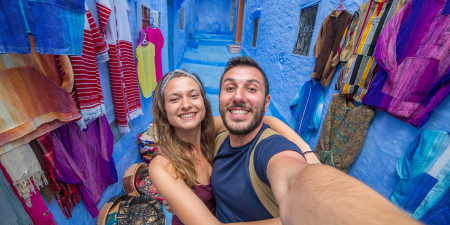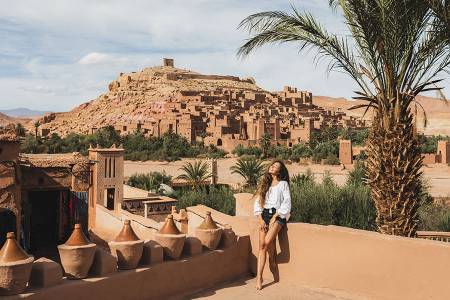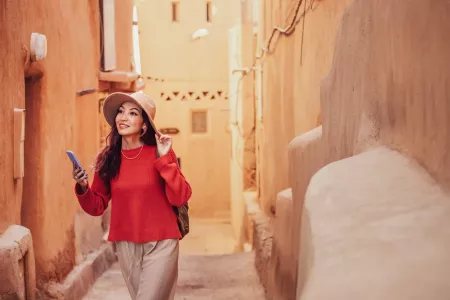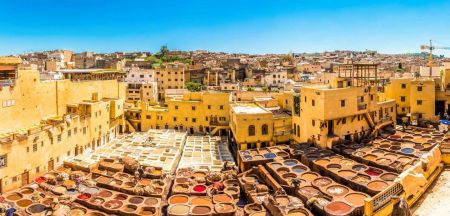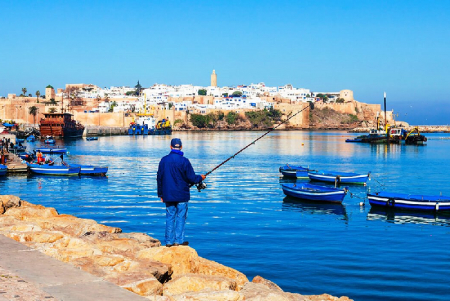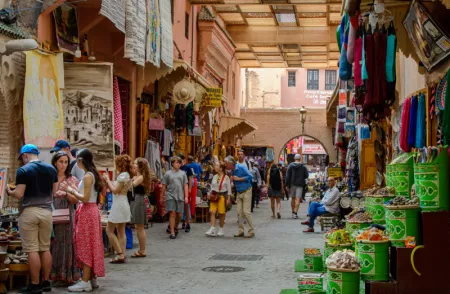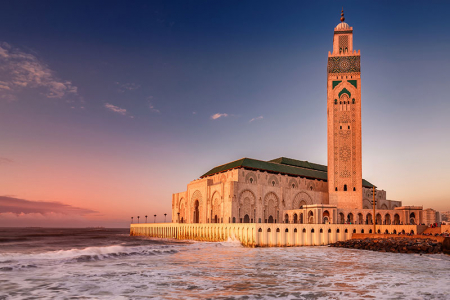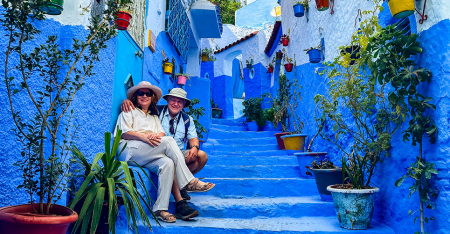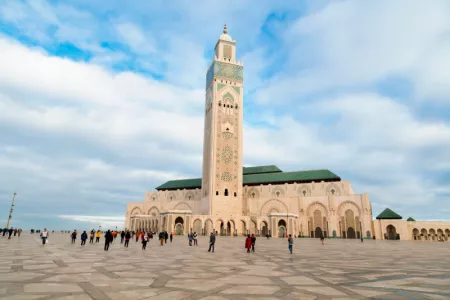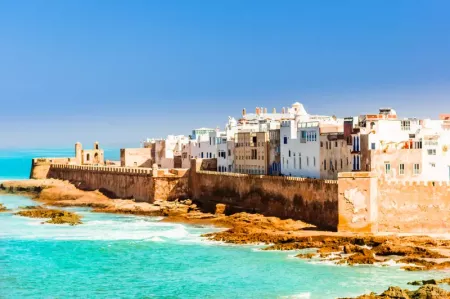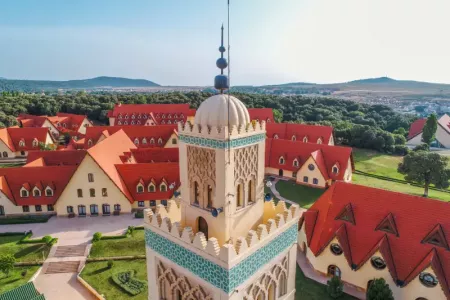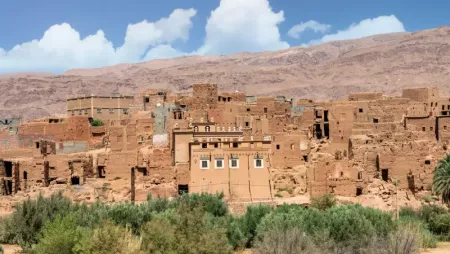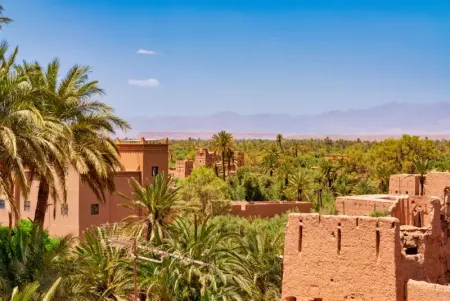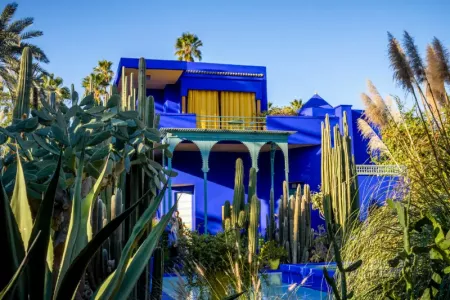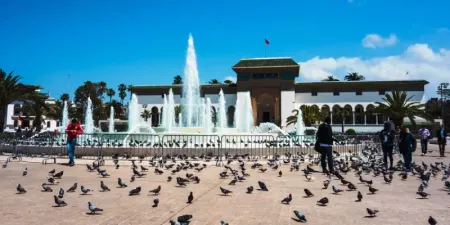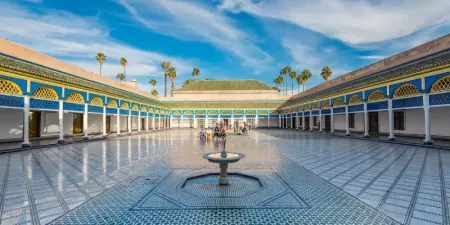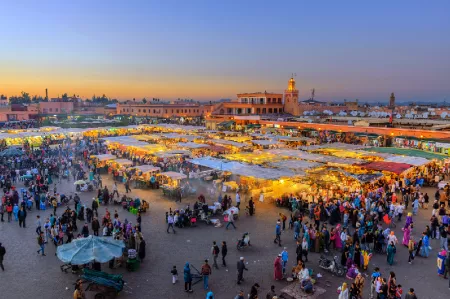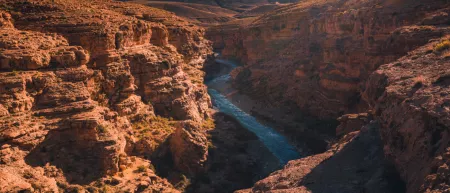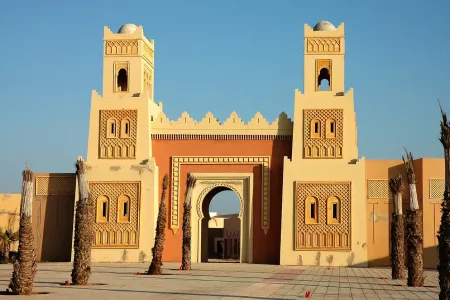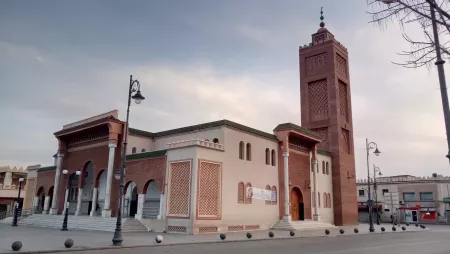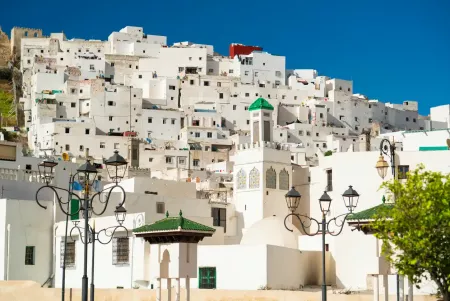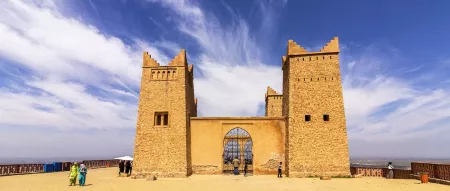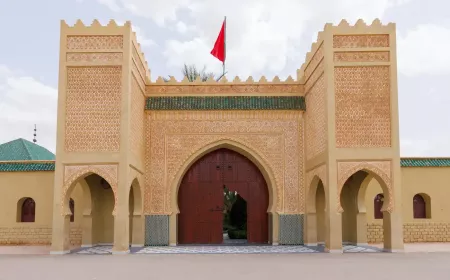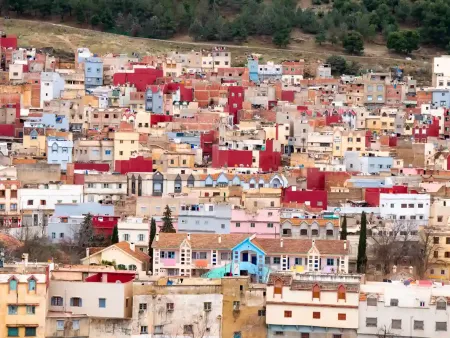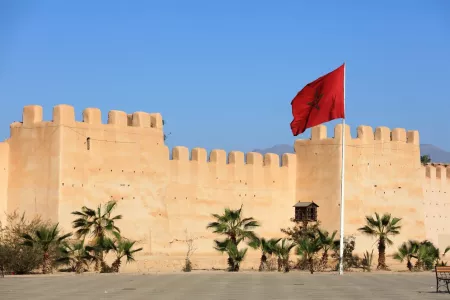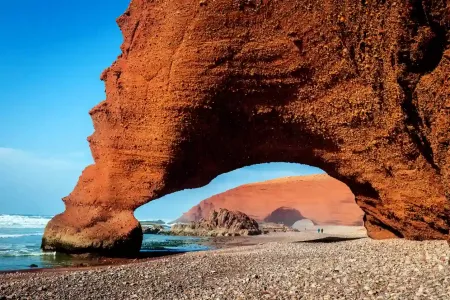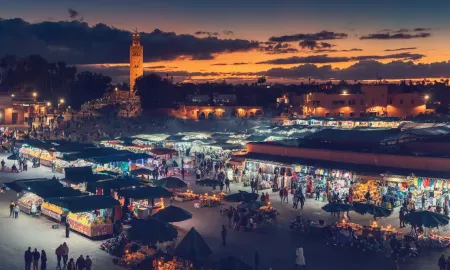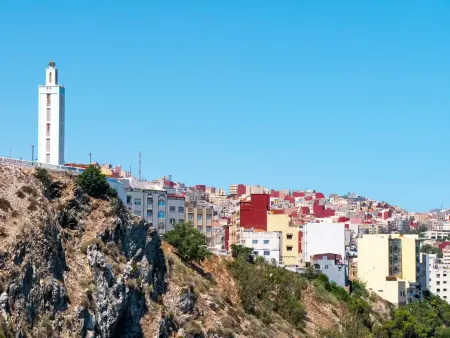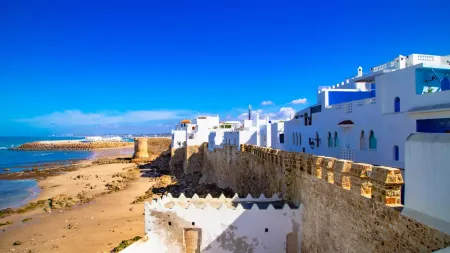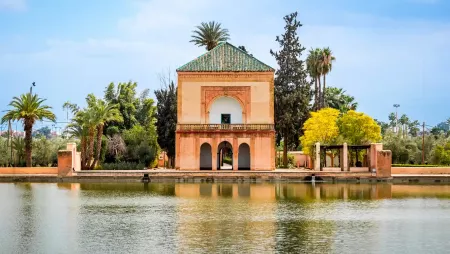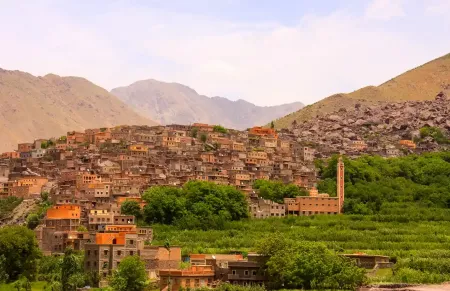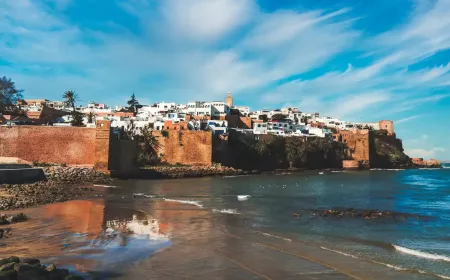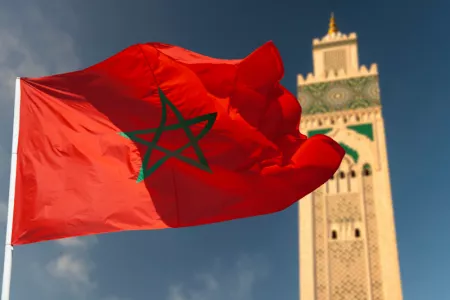El Badi Palace
El Badi Palace, built in the 16th century by Sultan Ahmad al-Mansur in Marrakesh, was once a lavish symbol of Saadian power. Adorned with marble, gold, and zellij mosaics, it featured 360 rooms and sunken gardens. Though dismantled in the 17th century, its ruins still echo Morocco’s rich royal and architectural heritage.
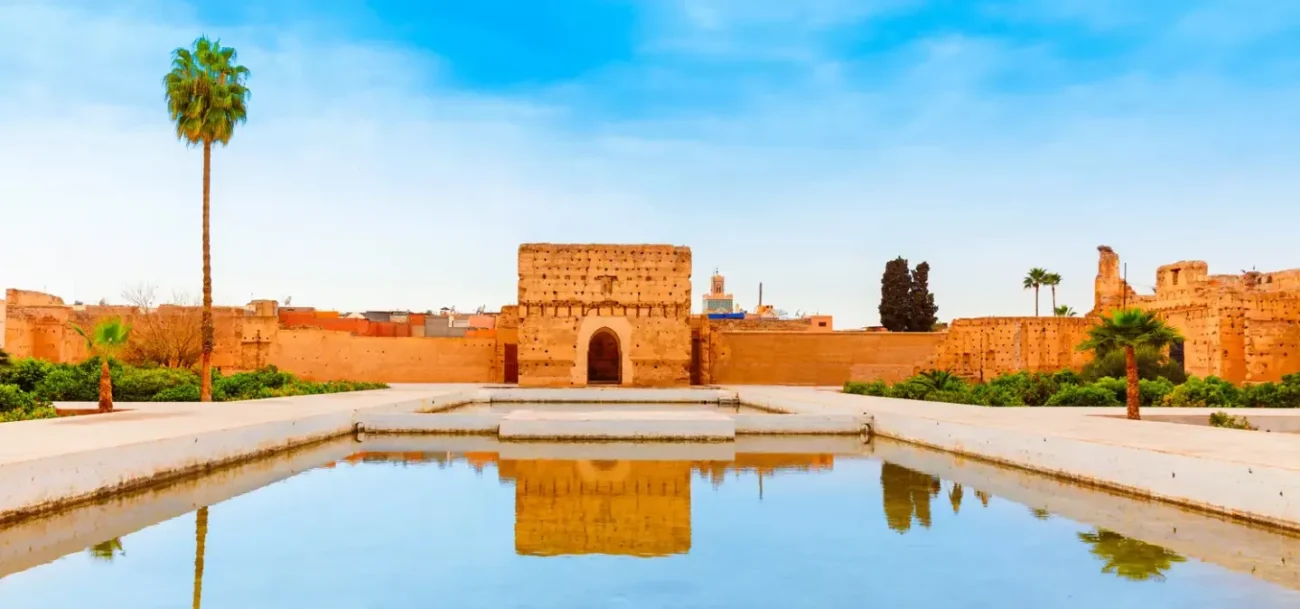
History records few structures that commanded such universal admiration as El Badi Palace, once hailed among the most magnificent edifices ever erected on Earth. Today, this extraordinary monument rises from the heart of Marrakesh, Morocco, its weathered walls bearing silent witness to centuries of glory and decline. The palace's staggering scale becomes apparent through numbers alone: 360 rooms spread across a construction timeline that stretched between 15 and 25 years, with official building phases documented from 1578 to 1593.
Sultan Ahmed al-Mansour conceived this architectural wonder as more than a mere royal residence. Following his triumphant victory against Portuguese forces at the Battle of the Three Kings, the sultan envisioned a palace that would embody Morocco's newfound power and prosperity. Every material told a story of global influence. Italian marble journeyed alongside treasures from Mali, creating an international tapestry of luxury that spoke to visitors in the language of imperial might.
The palace's fortunes shifted dramatically after al-Mansour died in 1603, when neglect began its slow but inexorable work. Fate delivered the final blow in 1696 when Sultan Moulay Ismail ordered the systematic dismantling of this once-glorious complex, redirecting its precious materials toward his own imperial ambitions in Meknes.
What remains spans an impressive 135 by 110 meters, creating a vast canvas upon which visitors can paint their understanding of Morocco's remarkable past. The entrance fee of 70-100 dirhams (cash payment required) grants access to this unique intersection of history, beauty, and contemplative silence. Here, among ruins that once constituted Morocco's most magnificent palace complex, the careful observer discovers stories etched in stone and whispered by the wind.
The Origins of El Badi Palace
Understanding El Badi Palace requires peeling back layers of history to reveal the calculated ambitions of a ruler who viewed architecture as statecraft. The palace's genesis intertwines military triumph, economic strategy, and spiritual symbolism in ways that illuminate the sophisticated political mind behind its creation.
The vision of Sultan Ahmad al-Mansur
Ahmad al-Mansur emerged as the Saadian dynasty's most enduring and accomplished ruler, claiming the throne in 1578 after his brother's death. His position as the dynasty's final sovereign carried particular weight—he understood that his legacy would determine how history remembered not just his reign, but the entire Saadian era. The palace commission came almost immediately after his coronation, reflecting a man who grasped the power of architectural propaganda.
Palace construction commenced in 1578, officially concluding in 1594; however, evidence suggests that al-Mansur continued refining and embellishing his creation for an additional two decades. The sultan's conception extended far beyond residential luxury. He designed El Badi as Morocco's premier diplomatic theater, where ambassadors from Spain, England, and the Ottoman Empire would witness firsthand the kingdom's prosperity and influence. Each reception hall, each decorative detail served this larger strategic purpose.
Funding from the Battle of the Three Kings
Financial resources for such unprecedented extravagance stemmed from a singular military encounter that reshaped North African geopolitics. The Battle of Alcacer Quibir in 1578 earned its macabre designation Battle of the Three Kings through the simultaneous deaths of three monarchs: Abu Abdallah Mohammed II, Portugal's King Sebastian, and the reigning Moroccan sultan Abu Marwan Abd al-Malik I.
Victory brought immediate financial rewards through Portuguese ransom payments for captured soldiers. Morocco's expanding commercial empire provided sustained wealth through strategic control of European sugar imports, supplemented by silk, copper, and leather exports. These diverse revenue streams enabled al-Mansur's extravagant material sourcing across continents, from Italian quarries to West African mines.
Why 'El Badi' means 'The Incomparable'
The palace's name reveals layers of meaning that merge religious devotion with political ambition. "El Badi" translates as "The Incomparable," representing one of Allah's 99 sacred names recorded in the Quranic scripture. Al-Mansur's selection reflected both personal piety and calculated messaging; the name simultaneously honored divine attributes while proclaiming his architectural achievements' unmatched status.
Contemporary observers validated this bold nomenclature through their written testimonies. Palace visitors consistently noted that the structure's magnificence justified its audacious title. Foreign dignitaries, overwhelmed by the palace's scale and luxury, proclaimed it the "eighth wonder of the world". The name thus functioned as both spiritual homage and accurate architectural assessment, demonstrating al-Mansur's sophisticated understanding of symbolism's power in medieval Islamic culture.
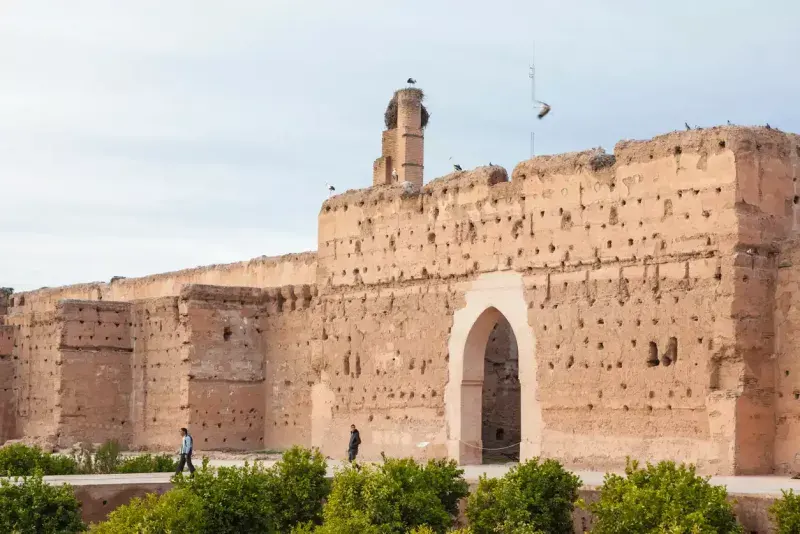
When I visited El Badi Palace in Marrakech, the entry fee was around 70 MAD (about £5 or $7). It’s affordable and absolutely worth it for the history and views alone.
Architectural Grandeur and Layout
The palace's architectural genius reveals itself through masterfully orchestrated spatial relationships that left visitors breathless with wonder. Constructed entirely upon solid brick vaults, the structure demonstrates an engineering prowess that matched its decorative splendor, each element carefully positioned to amplify the sultan's authority through sheer architectural dominance.
The central courtyard and sunken gardens
The palace's heart beats within a vast rectangular courtyard whose proportions—135 meters long by 110 meters wide—create an almost cathedral-like sense of scale. Dominating this space, a monumental central pool extends 90 meters in length and spans nearly 22 meters in width, its still waters once reflecting the sky like a mirror of paradise. Archaeological excavations have revealed four symmetrical sunken gardens positioned around this central water feature, each garden a carefully planned oasis. Lemon, olive, and rose trees once flourished in these planted areas, their verdant foliage creating a striking visual contrast against the palace's gleaming marble surfaces. The entire composition functioned as an enormous riad garden, where water served both aesthetic pleasure and practical cooling needs.
The four main pavilions and their functions
Each cardinal direction featured a distinct pavilion, creating a symphony of architectural purpose:
- The western Qubbat al-Khamsiniya (Pavilion of the Fifty) commanded attention as the sultan's primary reception hall. Whether named for its 50-cubit dimensions or its 50 supporting columns, this pavilion centered around a fountain surrounded by water basins decorated with silver animal sculptures.
- The eastern pavilion bore two names—Qubbat az-Zujaj (Crystal Pavilion) or Qubbat ad-Dahab (Gold Pavilion)—reflecting its role as the sultan's private sanctuary.
- The northern Qubbat al-Khadra (Green Pavilion) rose two stories high, its numerous chambers likely accommodating visiting ambassadors and foreign dignitaries.
- The southern Qubbat al-Khayzuran (Pavilion of Heliotrope/Myrtle) appears to have been connected to the palace's women's quarters.
Underground chambers and hidden passages
Beneath the palace's visible grandeur lay a hidden world of remarkable complexity. An elaborate network of underground passages enabled servants to traverse the entire complex unseen, maintaining the illusion of effortless royal service. These subterranean spaces housed hammams, kitchens, and even prison cells, creating a complete underground city. Most impressively, the underground chambers featured central heating systems that warmed the pavilions above, demonstrating sophisticated climate control technology.
The influence of Andalusian and Moorish design
The palace's architectural DNA traces directly to the Alhambra in Granada, Spain, though al-Mansur's vision expanded far beyond mere imitation. While honoring Andalusian decorative traditions, the palace achieved something monumentally larger and more ambitious. The layout echoes the Alhambra's famous Court of the Lions, yet operates on a dramatically expanded scale that dwarfs its inspiration. This architectural conversation between Islamic Spain and North Africa manifested in El Badi's symmetrical geometry, sophisticated water management, and intricate decorative programs.
Discover El Badi Palace in Marrakesh, where history meets grandeur. Book now with our Morocco tour packages.
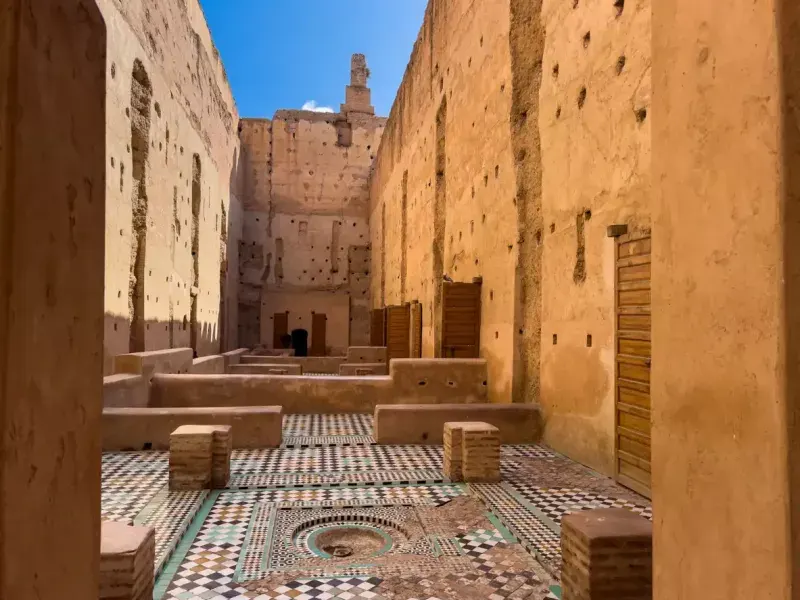
El Badi Palace represents Morocco’s golden age under Sultan Ahmed al-Mansour. Built in the 16th century, it symbolized royal power and Saadian wealth, once adorned with Italian marble and gold.
Materials, Craftsmanship, and Symbolism
The artisans who built El Badi Palace drew upon a global marketplace that stretched from European quarries to African gold mines, creating an architectural statement that spoke in the universal language of luxury. Sultan Ahmad al-Mansur's vision demanded nothing less than the world's finest materials, transforming his palace into a living catalog of 16th-century international commerce and artistic achievement.
Imported marble, gold, and onyx
Carrara marble from Italian quarries formed the backbone of El Badi's most striking visual elements, acquired through an extraordinary trade arrangement that exchanged Moroccan sugar for an equivalent weight in precious stone. Montaigne's Voyage en Italie captures this remarkable transaction, documenting Italian craftsmen near Pisa who labored to cut "50 very tall marble columns" destined for the "King of Fez in Barbary".
The palace's material palette extended far beyond Italian stone. Sudanese gold leaf caught and reflected light throughout the complex, while Indian onyx provided rich color variations. Chinese jade appeared alongside precious elements sourced from France and Spain. These weren't simply decorative choices—each material represented a diplomatic relationship, a trade route, or a demonstration of Morocco's far-reaching influence. The palace's 360 rooms each bore witness to this international gathering of treasures.
Zellij mosaics and stucco carvings
Saadian craftsmen elevated their traditional techniques to unprecedented heights within El Badi's walls. Archaeological discoveries reveal zellij mosaics of extraordinary complexity, featuring geometric patterns that included twenty-pointed stars—a mathematical and artistic achievement that challenged even master artisans. Palace walls displayed more than 20 distinct zellij patterns, with the dominant motif centering on an eight-pointed star known as Kahtem.
Carved stucco work complemented these mosaic masterpieces through intricate calligraphic inscriptions and gilded column capitals. Pavilion ceilings showcased precious muqarnas—honeycomb formations encrusted with gold that created three-dimensional geometric poetry overhead. Wooden elements, particularly doors and window frames, displayed elaborate carving techniques whose remnants still whisper of their former glory.
Symbolic elements in Islamic architecture
Water served as both a practical element and a spiritual metaphor throughout El Badi Palace, echoing Islamic conceptions of Paradise gardens. Pools and fountains—some adorned with solid silver animal sculptures—created mirror-like surfaces that doubled the visual impact of surrounding architecture while demonstrating sophisticated hydraulic engineering. These water features drew direct inspiration from Alhambra design principles, creating cultural dialogue across the Mediterranean.
Geometric patterns in zellij work represented far more than mere decoration. Each interlocking shape reflected Islamic concepts of cosmic order and divine unity. Calligraphic inscriptions carried religious weight, often featuring Quranic verses that blessed both palace and occupants. Every decorative choice served dual purposes—visual beauty and spiritual significance, creating spaces where earthly power and divine authority found architectural expression.
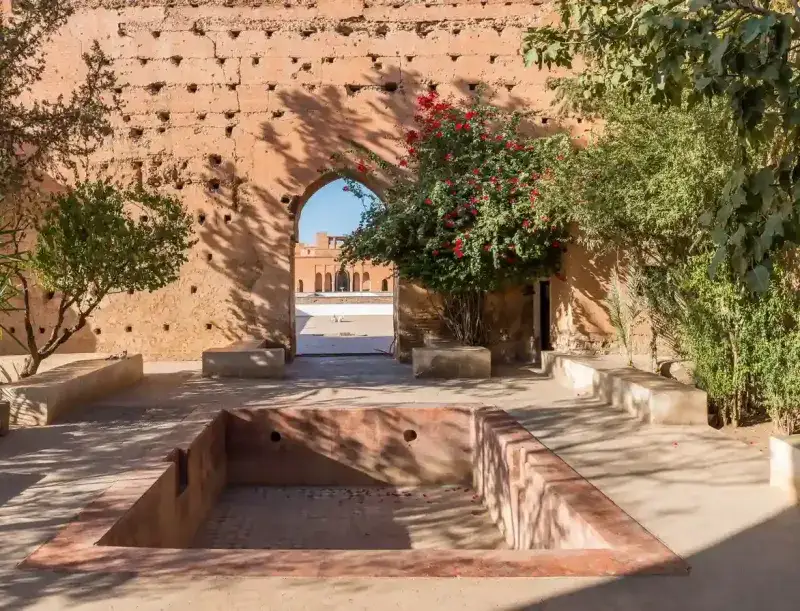
Yes, the Bahia Palace is definitely worth visiting! I loved walking through its ornate courtyards, carved cedar ceilings, and colorful mosaics. It’s one of the most beautiful examples of Moroccan-Andalusian architecture in Marrakech.
Customize Your Dream Vacation!
Get in touch with our local experts for an unforgettable journey.
Plan Your TripFrom Splendor to Ruin: The Palace's Decline
El Badi Palace's reign as an architectural wonder proved remarkably brief. Within a single century, this monument to imperial ambition underwent a transformation so complete that it reshaped not only the palace itself but the very landscape of Moroccan power.
Moulay Ismail's dismantling of the palace
The palace's gradual decline began with al-Mansur's death in 1603, yet its ultimate fate arrived with stunning deliberation in 1696. Sultan Moulay Ismail, the second ruler of the Alaouite dynasty, issued orders that would forever alter Morocco's architectural heritage. His decision transcended mere practicality—it represented a calculated erasure of the Saadian legacy while establishing Alaouite supremacy.
Historical chronicles document the methodical nature of this destruction. Workers toiled from sunrise to sunset for an entire decade, systematically dismantling what had taken decades to build. When courtiers reported the demolition's progress, Moulay Ismail delivered a response that revealed both acknowledgment and ambition: "I know it was well built, but they should also know that I can build even better."
Reuse of materials in Meknes and beyond
The palace's precious materials embarked on a 400-kilometer journey northward to Meknes, where Moulay Ismail was constructing his own imperial capital. Italian marble columns that once graced El Badi's courtyards found new purposes within Ismail's palace walls and the massive fortifications surrounding Meknes. Gold-adorned ceilings and elaborate decorations followed this path of architectural migration.
Some elements traveled even further across Morocco's landscape. Archaeological evidence reveals El Badi's materials scattered throughout the kingdom—fragments appear in buildings across Fez and Casablanca, creating an unintended architectural diaspora that spread the palace's influence far beyond its original boundaries.
Modern restoration efforts and earthquake damage
Contemporary visitors encounter primarily the palace's underlying brick skeleton, stripped of its ornamental glory centuries ago. Archaeological excavations launched in the 1950s revealed the original garden layouts and pool configurations, providing crucial insights into the complex's former arrangement.
Modern conservation focuses on preserving existing structures rather than attempting reconstruction. Natural forces have complicated these efforts—the devastating 1755 earthquake inflicted additional damage upon the already-stripped foundation. Today's site includes a modest museum housing artifacts such as the restored 12th-century minbar from the Koutoubia Mosque.
Despite its skeletal state, the ruins continue attracting visitors who recognize the extraordinary scale and architectural intelligence that once earned this complex its title as "The Incomparable." The palace's current form offers a different kind of revelation, one that speaks to the impermanence of even the most ambitious human achievements.
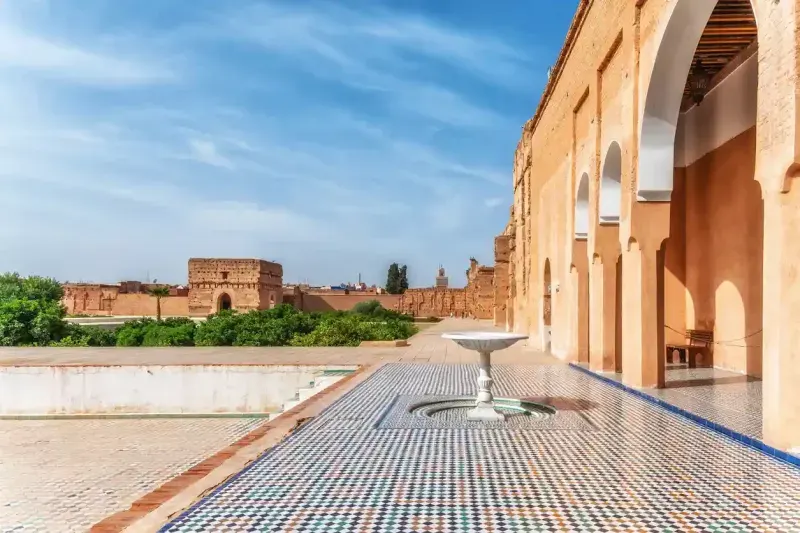
El Badi Palace hasn’t been fully restored; it remains a majestic ruin, with massive walls and underground passages that hint at its former glory. I found the contrast between decay and history fascinating.
Conclusion
The weathered remains of El Badi Palace offer visitors far more than mere architectural curiosity. This remarkable site functions as a living classroom where stone and silence collaborate to teach profound lessons about the impermanence of human ambition. Where once Carrara marble gleamed alongside Sudanese gold, today's explorers encounter something equally valuable—an opportunity to witness how time reshapes even the most grandiose expressions of royal power.
The palace's journey from "eighth wonder of the world" to atmospheric ruin illustrates historical patterns that extend far beyond Morocco's borders. Sultan Ahmad al-Mansur's monument to victory became, within a single century, raw material for Sultan Moulay Ismail's competing vision. This transformation reveals how each generation of rulers seeks to literally build upon—or dismantle—their predecessors' legacies.
Modern visitors encounter a different kind of magnificence than that which dazzled 16th-century ambassadors. The empty pools now reflect sky instead of ceremonial splendor, while storks nest where once precious muqarnas adorned the ceilings. These changes create their own form of beauty, one that speaks to contemplation rather than ostentation.
Archaeological efforts have rescued the palace's essential story from complete obliteration. The recovered layout of sunken gardens, the mapped network of underground passages, and the preserved artifacts displayed in the site's museum allow contemporary explorers to reconstruct mental images of vanished grandeur. This detective work transforms each visit into an exercise in historical imagination.
The site's current state perhaps serves Sultan al-Mansur's original purpose better than its pristine version ever could. "The Incomparable" now teaches incomparable lessons about the relationship between power and time. Visitors leave understanding that true immortality belongs not to individual rulers or their monuments, but to the human capacity for creating beauty, learning from loss, and finding meaning in ruins.
FAQs
Q1. What led to the decline of El Badi Palace?
El Badi Palace's decline began after Sultan Ahmad al-Mansur's death in 1603. The final blow came in 1696 when Sultan Moulay Ismail ordered its systematic dismantling, which took a decade to complete. Most of the palace's precious materials were repurposed for Moulay Ismail's new imperial city in Meknes.
Q2. When was El Badi Palace constructed and why?
El Badi Palace was built between 1578 and 1593 by Sultan Ahmad al-Mansur. It was constructed to celebrate his victory in the Battle of the Three Kings against Portuguese forces and to showcase his wealth and power. The palace's name, "El Badi," means "The Incomparable" in Arabic.
Q3. What are the current admission fees for El Badi Palace?
The entrance fee for El Badi Palace is between 70-100 dirhams (approximately $7-$11 USD) for adults. It's advisable to bring cash as this is the preferred payment method.
Q4. What architectural influences can be seen in El Badi Palace?
El Badi Palace's architecture was heavily influenced by Andalusian and Moorish designs, particularly drawing inspiration from the Alhambra in Granada, Spain. The palace features symmetrical layouts, extensive use of water features, and decorative elements characteristic of Islamic architecture in North Africa and Spain.
Q5. What can visitors see at El Badi Palace today?
Today, visitors can explore the vast courtyard with its central pool and four sunken gardens. While much of the original ornamentation is gone, the remaining structures offer a glimpse into the palace's former grandeur. The site also houses a small museum displaying artifacts, including a restored 12th-century minbar from the Koutoubia Mosque.
I spent about 1 to 1.5 hours exploring El Badi Palace. That was enough time to wander through the courtyards, visit the museum, and climb up for panoramic views of Marrakech.

